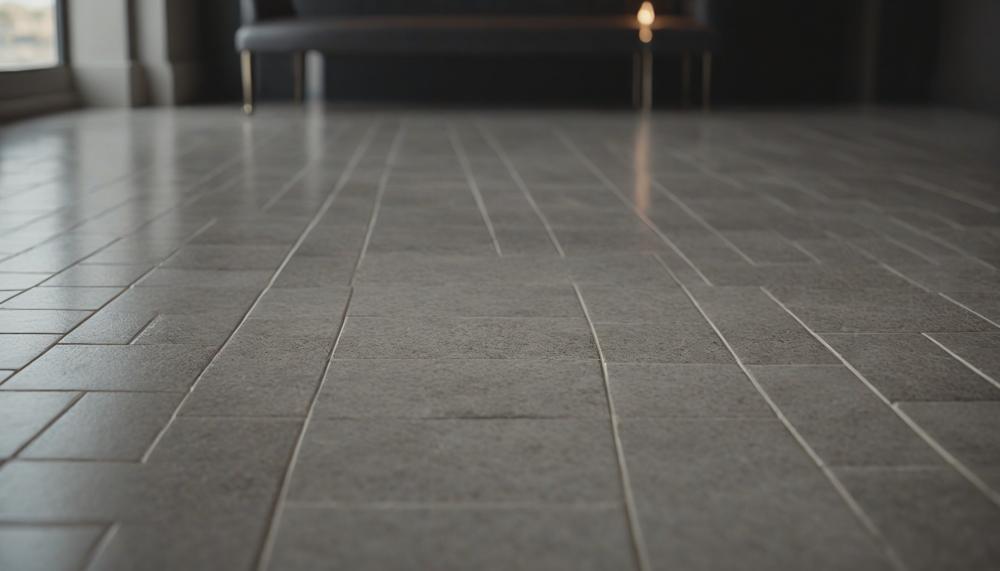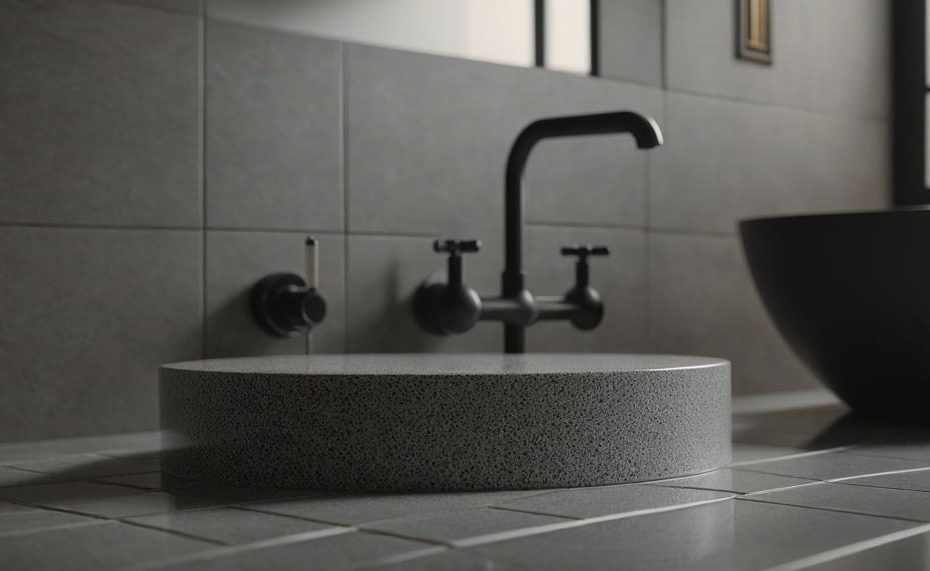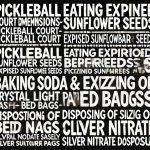How should grout be disposed of? Simply put, grout should never be thrown directly into the trash due to potential health risks. Instead, it must be taken to a landfill or processed correctly to minimize environmental impact. Grout disposal might seem like a small task, but improper handling can lead to clogged drains, contaminated water, and health hazards.
Grout often comes in large quantities, so leftover grout is inevitable. Whether you’re a seasoned DIYer or just sprucing up your bathroom, knowing how to properly dispose of grout is crucial for both your safety and the environment. Here are the essential steps:
- Dispose of Excess Grout Water: Never pour it down the drain. Stir it up and pour it into a disposable basin or container.
- Dry Solidified Grout: Allow it to dry completely before placing it in a sturdy container and disposing of it in the trash.
- Reuse Leftover Grout: Use it for touch-ups or store it for future projects.
- Clean Grout Residue from Buckets: Scrape off dried grout and hose down the bucket before reuse.
These steps not only protect our waterways but also ensure your home improvement projects don’t come with unintended consequences. Stay tuned as we delve deeper into each method, ensuring your grout disposal process is safe and environmentally friendly.
Contents
- 1 Understanding Grout Powder and Its Disposal Necessities
- 2 What Is Grout Powder?
- 3 Practical Steps for Disposing of Unused Grout Powder
- 4 Alternatives to Disposal: Making the Most of Unused Grout
- 5 The Lifespan and Storage of Grout Powder
- 6 Environmental Considerations in Grout Disposal
- 7 Ensuring a Clean and Safe Disposal Process
- 8 Conclusion
Understanding Grout Powder and Its Disposal Necessities
Improper disposal of grout powder can lead to significant environmental and infrastructural issues. When washed down drains, grout powder can harden, leading to severe plumbing clogs and potential sewage system damage. Furthermore, it can contaminate water systems, affecting aquatic life and water quality. If simply discarded in regular trash, it can contribute to landfill pollution and soil contamination.
Proper disposal of grout powder involves several steps:
- Harden and Dispose as Solid Waste: Mix the grout powder with water to allow it to harden. Once solidified, it can be safely disposed of as solid waste at a landfill.
- Consult Local Authorities: Contact local waste management authorities for specific guidelines, as regulations can vary.
- Alternative Uses: Consider using leftover grout for touch-ups or small repairs instead of disposing of it.
- Contain and Label: Use sturdy containers and label them properly to ensure safe handling and transportation by waste management personnel.
- Safety Measures: Always wear proper safety gear when handling grout to avoid health risks.
For further guidance on disposing of grout powder and other construction materials, refer to trusted sources such as Waste Management or local environmental protection agencies.
| Impact | Description |
| Plumbing Clogs | Grout can harden in pipes, leading to severe clogs and plumbing issues. |
| Water Pollution | Improper disposal contaminates water systems, harming aquatic life and water quality. |
| Landfill Pollution | Contributing to landfill waste, potentially contaminating soil and groundwater. |
What Is Grout Powder?
Grout powder is a blend of cement, sand, and pigments, used to fill the spaces between tiles. Its primary function is to create a watertight seal and enhance the overall look of tiled surfaces. However, it is crucial to dispose of grout powder properly to prevent environmental damage and plumbing issues.
Why Proper Disposal is Important
Improper disposal of grout powder can cause:
- Environmental Pollution: When washed down the drain, grout powder can contaminate water systems, harming aquatic life.
- Plumbing Issues: Grout can harden in pipes, leading to severe clogs and potential damage to plumbing infrastructure.
Proper Disposal Methods
To dispose of grout powder safely, follow these steps:
| Step | Action | Details |
| 1 | Mix with Water | Combine the grout powder with water to allow it to harden. This turns it into a solid form, making it safer to handle. |
| 2 | Solid Waste Disposal | Once hardened, dispose of the grout as solid waste. Check local regulations for guidelines on disposing of construction materials. |
| 3 | Label Clearly | Label the container with the hardened grout clearly, ensuring proper identification for waste handlers. |
| 4 | Use Sturdy Containers | Transport the hardened grout in robust containers to prevent spills during disposal. |
For more detailed guidelines, consult local environmental agencies or hazardous waste disposal facilities. This ensures compliance with regulations and contributes to eco-friendly practices.
Alternative Uses

Unused grout can also be repurposed. Consider these alternatives:
- Creative Projects: Use it for art and craft projects.
- Donation: Donate to schools or community centres.
By following these steps, you help protect the environment and maintain efficient plumbing systems.
Practical Steps for Disposing of Unused Grout Powder
Disposing of unused grout powder requires careful handling to prevent environmental harm and plumbing issues. Here are practical steps to ensure safe and eco-friendly disposal:
Mix with Water
:
Combine the grout powder with water to form a solid mass. This prevents the powder from becoming airborne or causing blockages in drains.
Dispose as Solid Waste
:
Once hardened, treat the mixture as solid waste. Check with local waste management authorities for specific disposal guidelines. In many cases, it can be taken to a landfill or a hazardous waste facility.
Contact Local Authorities
:
Always confirm with local waste management services for any specific instructions or regulations regarding construction waste disposal.
Repurpose Unused Grout
:
Donate: Unused grout can be donated to schools, community centers, or local construction projects. This not only helps the community but also reduces waste.
Creative Projects: Use leftover grout for DIY projects, like making stepping stones or mosaics.
Proper Storage
:
If you plan to keep the grout for future use, store it in a dry area in airtight containers to extend its shelf life.
Protective Measures
:
When handling grout, always wear protective gear such as gloves and masks to avoid inhalation or skin contact.
Label the container clearly to ensure safe handling and transport.
Recycling Options
:
Explore local recycling programs that might accept grout. Some glass cleaners or similar recycling initiatives can use grout, reducing the amount of waste sent to landfills.
Alternatives to Disposal: Making the Most of Unused Grout
| Application | Description | Benefit |
| Crack and Hole Filler | Mix with water and apply to cement or concrete gaps. | Minimizes waste, provides a durable repair solution. |
| Garden Projects | Use as a base for potted plants or decorative garden elements. | Keeps grout out of landfills, adds uniqueness to outdoor spaces. |
| Chalk Paint | Mix one part grout with three parts latex paint. | Eco-friendly, cost-effective, creates a vintage look. |
Recycling Unused Grout
- Donation to Art and DIY Organizations
Local artists and crafters often use grout in their projects, such as mosaics or sculptures. Donating unused grout supports these creatives and helps reduce waste. Check with community centers, art schools, or online groups for donation opportunities.
- Neighborhood Swap
Host a neighborhood swap event where people can exchange unused materials, including grout, for other items they may need. This fosters community connections and ensures materials are reused rather than discarded.
Proper Disposal
If repurposing or recycling isn’t feasible, contact your local hazardous waste facility for guidelines on safe disposal. They may recommend using absorbent materials to solidify the grout before disposal or provide designated drop-off locations.
By exploring these environmentally-friendly alternatives, you can reduce waste, support local artists, and create unique DIY projects, all while protecting the environment.
The Lifespan and Storage of Grout Powder
Grout powder typically lasts for one year from the date of manufacture if it remains unopened. Once opened, it should be used within six months to ensure optimal performance. The longevity of grout can be influenced by storage conditions, so proper storage is key to extending its lifespan.
The best way to store grout powder is as follows:
- Cool, Dry Place: Store the grout in a location that is cool and dry. Excessive heat or moisture can degrade the grout, rendering it unusable before its expiration date.
- Sealed Container: Keep the grout in its original, tightly sealed packaging. If the original packaging is damaged, transfer the grout to an airtight container to prevent exposure to air and moisture.
- Off the Ground: Place the grout on a shelf or pallet to keep it off the ground, reducing the risk of moisture absorption from the floor.
- Avoid Freezing: Ensure the storage area is above freezing temperatures, especially for pre-mixed grout, which can be destroyed by freezing conditions.
Environmental Considerations in Grout Disposal
Improper disposal of grout can significantly impact the environment. Below are key environmental impacts to consider and how proper disposal methods can mitigate these effects.
Environmental Impacts:
Water Pollution:
Grout contains chemicals that can contaminate water supplies if washed down drains.
Can lead to harmful effects on aquatic life.
Soil Contamination:
Improperly discarded grout can seep into the soil, affecting plant life and entering the food chain.
Air Pollution:
Dust from grout powder can contribute to air pollution, posing respiratory hazards.
Waste Accumulation:
Large amounts of construction waste, including grout, add to landfill burdens.
Minimizing Environmental Impacts:
Solidification Before Disposal:
Mix grout powder with water to harden it. This process reduces the risk of chemical leaching.
Dispose of the solidified grout at a designated landfill or hazardous waste facility.
Proper Labeling and Containers:
Use sturdy containers to transport solidified grout, ensuring it is clearly labeled for waste management personnel.
Recycling and Reuse:
Investigate local recycling programs that accept construction materials.
Some glass cleaners or construction companies may accept leftover grout for recycling purposes.
Compliance with Local Regulations:
Follow local laws governing the disposal of construction waste to avoid fines and ensure environmental protection.
Protective Measures:
Wear protective gear when handling grout to avoid personal harm and accidental spillage.
Ensuring a Clean and Safe Disposal Process
Improper grout disposal can wreak havoc on both the environment and household plumbing. Here’s what you need to know to ensure a clean and safe disposal process:
Potential Hazards of Improper Grout Disposal
Environmental Pollution:
Grout powder can seep into water systems, polluting lakes, rivers, and groundwater.
The chemicals in grout can harm aquatic life and disrupt ecosystems.
Plumbing Issues:
Washing grout down the drain can cause severe clogs, leading to costly repairs.
Hardened grout in pipes can block water flow, necessitating professional intervention.
Air and Soil Pollution:
Improperly disposed grout can release harmful dust into the air, contributing to respiratory issues.
Residual chemicals can contaminate soil, affecting plant life and groundwater quality.
Steps for Safe Grout Disposal
Solidify the Grout:
Mix any leftover grout powder with water to create a solid mass. This prevents it from spreading or causing dust pollution.
Allow the mixture to fully harden before proceeding to the next step.
Use Proper Containers:
Place the hardened grout in a sturdy container. Ensure it is well-sealed to avoid any leakage during transport.
Label the container clearly to indicate its contents.
Disposal at Appropriate Facilities:
Take the sealed container to a local landfill or hazardous waste facility. They have the right processes for handling construction waste safely.
Contact your local waste management authority for specific guidelines. Each region may have different regulations on disposing of construction materials like grout.
Protective Measures:
Wear protective gear such as gloves and masks when handling grout to avoid direct contact with skin and inhalation of dust.
Work on a flat, stable surface to minimize spills and make cleanup easier.
Local Regulations and Guidelines:
Always follow local regulations for disposal. They are designed to protect both the environment and public health.
Some areas might offer recycling programs for construction waste. Participate in these programs if available.
Practical Tips for Homeowners
| Step | Action | Benefit |
| Solidify Grout | Mix grout with water and let it harden | Prevents dust pollution and makes handling easier |
| Use Proper Containers | Seal hardened grout in a sturdy container | Avoids leakage and simplifies transport |
| Disposal Facilities | Take to landfill or hazardous waste facility | Ensures safe and compliant disposal |
| Protective Measures | Wear gloves and masks | Protects from direct contact and inhalation |
| Follow Local Guidelines | Contact local waste management for specific instructions | Compliance with regulations, possible recycling options |
Conclusion
Properly disposing of grout is essential for protecting both the environment and your plumbing. Grout should never be casually tossed into the trash or washed down the drain, as this can lead to clogged pipes, contaminated water systems, and health risks. Instead, take these steps to handle grout disposal safely and responsibly.
First, always handle excess grout water by letting it settle, then pouring it into a disposable container. Never pour it directly down the drain. Solidified grout should be allowed to dry completely before being placed in a sturdy container for disposal. This method ensures it won’t clog plumbing or contribute to landfill pollution.
For leftover grout, consider storing it for future touch-ups or donating it to local community projects. Additionally, ensure that buckets and tools used with grout are cleaned thoroughly to prevent residue from hardening and causing issues later.
Always wear protective gear when handling grout to avoid health hazards. By following these guidelines, you can complete your home improvement projects while minimizing environmental impact and maintaining safe, effective waste disposal practices.





